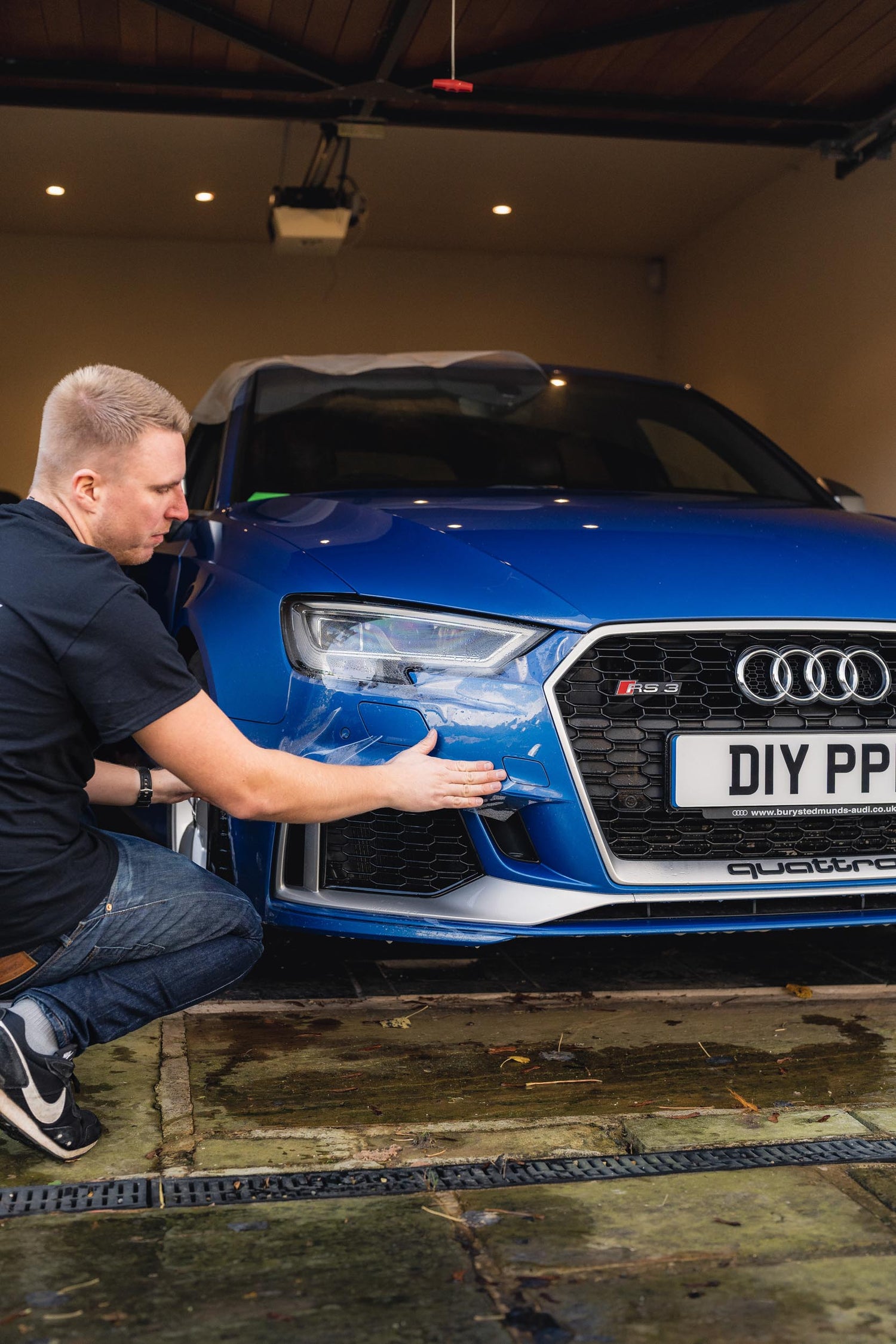There's a huge range of Paint Protection Films on the market so the question often gets asked: what's the difference between cheap, and expensive stuff?
Well, aside from the obvious, cost, there are a few factors you should consider.
The main and most pressing difference to discuss is the self-healing capabilities of different types of PPF film. Not all paint protection films can self-heal, and this is a really important point to consider.
Without a self-healing film, you lose many benefits of PPF. One of the main benefits of PPF is that it consistently keeps your car looking great and does this by self-healing. This means that small or even large scratches to the bodywork of your car will disappear with some light heating of the film which drastically helps to reduce the chances of swirl marks and other light cosmetic damage being visible.
Another point to note is that when fitting the film, given that DIY fitting conditions may not be dust free and perfect, without a self-healing film, you can actually very easily scratch the film when applying it to your vehicle, so it'll always look poor from the very first day!
Check out this video to show the process in action. As you can see, not having self-healing capabilities will drastically reduce the effectiveness of an installation in time. DIY PPF film is self-healing.
At DIY PPF, we've spent many days applying different PPF products to our own vehicles, putting them through their paces, ripping them back off and going again.
All of this work has led us to use the film we use today. Not only does it have fantastic self healing capabilities, the film is also significantly easier to fit than other films which brings us to our next point.
Ease of fitting!
DIY PPF film is the perfect balance of 'not too thick, not too thin' meaning that the playability of the film, the stretch of the film and the temperature range you're able to apply the film in is best suited for a DIY product where naturally fitting conditions will vary.
We want to give you the very best chance of a successful application and going with a cheaper product is likely to reduce this chance.
During our testing, we worked with other, much cheaper products such as Oraguard (which we do not use) and similar other products which can be up to 5 times cheaper, however, we found these products extremely difficult to apply due to the product being overly thick, very difficult to stretch and require a lot of heat to apply, making the fitting process both challenging and very time-consuming.
Next up is Hydrophobic coatings.
Some PPF films have hydrophobic properties built into them, and some don't. The DIY PPF film does not have hydrophobic properties. The reason our product doesn't have hydrophobic coating is that when you introduce this to a film, it gets thicker and therefore, more difficult to apply which brings us back to the point above.
However, having had DIY PPF film fitted to a number of our own vehicles, we've been super impressed with how well the water beads on the film and generally find that water beads are better off the PPF than it does off the rest of the paintwork. That said, there is a solution. You can apply a ceramic coating over the top of PPF film, an option some customers opt for. This way, you get the best of both worlds with an easy application and hydrophobic properties from the ceramic coating.
The last point we wanted to touch on is the cost!
Whilst cheaper PPF films could be a good option to protect things like mountain bikes, off-roaders, motocross bikes, rally cars and other easily scratched or damaged vehicles from the very worst of the grime, it will never look as good as the more expensive product.
This may not matter for the items listed above, but if you're looking to protect your car, and for it to look better than it did before fitting PPF then the only choice is a product like DIY PPF where we supply professional quality film that will look great on your vehicle for years to come.
As ever, if you have any questions please feel free to ask below, or drop up an email via our contact page.
In the meantime, safe driving!


